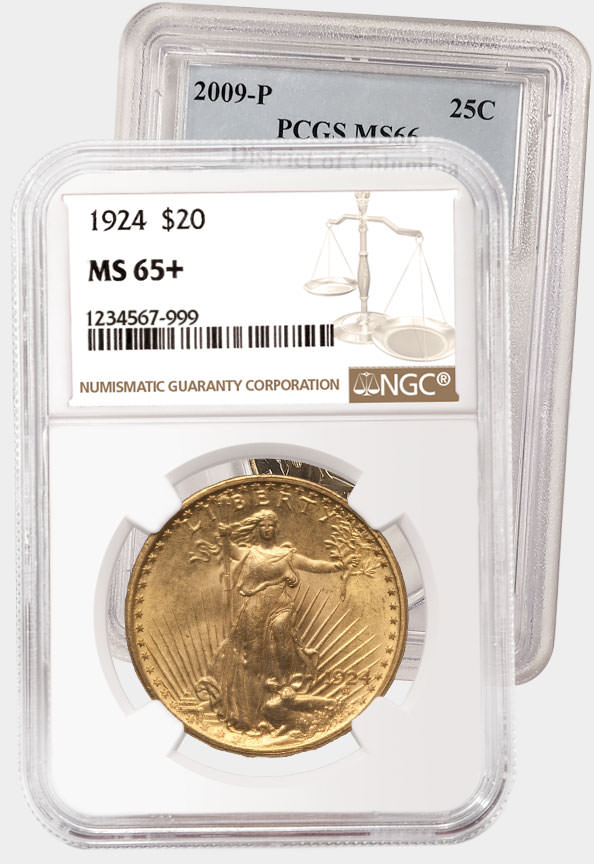US Mint Allegience Medal
Posted on 5/10/2016
Abraham Lincoln was sworn in as the 16th President of the United States on March 4, 1861. Unfortunately for the new president, South Carolina, Mississippi, Florida, Alabama, Georgia, Louisiana and Texas had seceded from the Union by the time he was inaugurated. In fact, the Confederate States of America had already been formed nearly a month earlier, on February 9, 1861. North Carolina would later join the Confederacy on May 21, 1861.
 |
|
| The second Philadelphia Mint (1833-1901) as it appeared in 1900. Image credit: Library of Congress. Click image to enlarge. |
|
With the loss of North Carolina, three of the five US Mint facilities were now located within the Confederacy: Charlotte, North Carolina; Dahlonega, Georgia; and New Orleans, Louisiana. These three Mints did not account for much of the coinage issued by the United States. Based on the numbers for 1860, the Charlotte, Dahlonega, and New Orleans Mints only accounted for around 6.7% of the face value issued that year. Still, losing three Mint facilities obviously worried the Union government.
The Charlotte and Dahlonega Mints ceased production shortly after North Carolina and Georgia joined the Confederacy, and only a minimal number of coins, if any, were struck at these facilities while they were under Confederate control. The New Orleans Mint, however, remained open after Louisiana joined the Confederacy on January 26, 1861, and the former US Mint employees continued at their positions.
In fact, the Confederate States of America struck nearly 40% of the mintage of 1861-O half dollars—962,633 coins. Most are indistinguishable from a normal 1861-O half dollar issued under the United States government. Some, however, such as the one below, have a small die crack from Liberty’s nose to the rim. This die crack is also seen on pattern half dollars issued by the Confederate States of America that combined the Seated Liberty obverse with a new Confederate reserve design. The fact that this same die was used on an official Confederate States half dollar, proves that the coin below, along with any other 1861-O half dollar with the die crack, was struck under direction of the Confederacy.
 |
 |
| 1861-O Confederate Obverse Half Dollar, obverse (left) and reverse (right). Image credit: Heritage Auctions. Click images to enlarge. |
|
Clearly, the fact that the New Orleans Mint employees and officers stayed in their positions to strike coins for the Confederacy was a huge embarrassment to Mint officials in Philadelphia. In response to these events, all US Mint employees were asked to swear an oath to the Constitution. In addition to saving face in the public eye, Mint Director James Pollack hoped that the oath would help to eliminate any southern sympathizers.
In honor of this oath taken by the employees on September 9, 1861, commemorative medals were struck with dies fashioned by famous engraver Anthony C. Paquet. These medals featured the bust of Washington on the obverse, and were clearly quite popular considering their relative availability today. According to Julian, these medals were issued with Washington on the obverse solely to make them more popular to collectors who were very interested in everything Washington-related in the early parts of the Civil War.
At the end of the Civil War, the South was in ruins and its economy was destroyed. The New Orleans Mint was not reopened until after the passage of the Bland-Allison Act in 1878. This legislation forced the Mint to buy large quantities of silver bullion every year for coinage, mostly silver dollars. After a year of refurbishment, the United States Branch Mint in New Orleans was recommisioned in 1879. The Charlotte and Dahlonega Mints were among the causalities of the war and never reopened.
Sources:
- http://www.historyplace.com/civilwar/
- http://uspatterns.stores.yahoo.net/anthonycpaquet.html
- http://legacy.stacks.com/
- http://www.HA.com
- Julian, R. W. (1977). Medals of the United States Mint: The First Century, 1792-1892. The Token and Medal Society, Inc.
- Yeoman, R. S. (2015). A Guide Book of United States Coins. Whitman Publishing.
Stay Informed
Want news like this delivered to your inbox once a month? Subscribe to the free NGC eNewsletter today!




